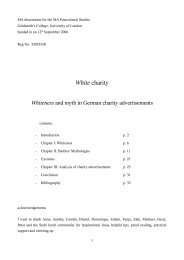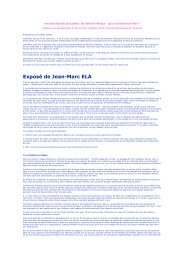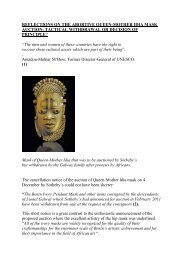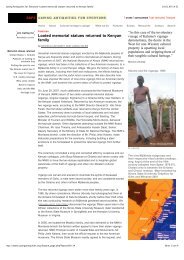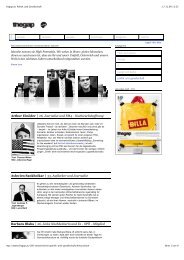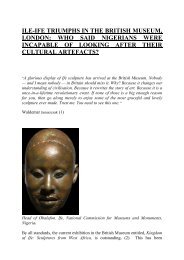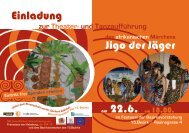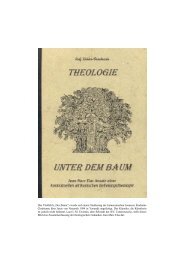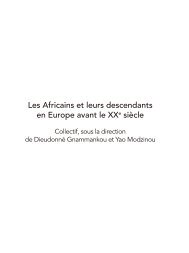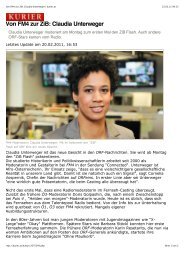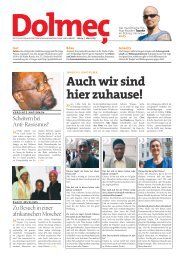RECOVERING NIGERIA'S TERRACOTTA - Afrikanet.info
RECOVERING NIGERIA'S TERRACOTTA - Afrikanet.info
RECOVERING NIGERIA'S TERRACOTTA - Afrikanet.info
You also want an ePaper? Increase the reach of your titles
YUMPU automatically turns print PDFs into web optimized ePapers that Google loves.
This presentation recounted the controversy over the three illegally exported<br />
Nok and Sokoto objects originating from Nigeria which landed in an exhibition<br />
at the Louvre organized in anticipation of the new Quai Branly Museum.<br />
Despite the fact that these objects were on the Red List posted on ICOM’s<br />
website, the French government negotiated their acquisition from a Belgian art<br />
dealer with the proviso that an agreement from the Nigerian government would<br />
be required before the actual purchase. President Chirac is reported to have<br />
personally sought and obtained the approval for the purchase of the Noks from<br />
President Obasanjo of Nigeria despite the strong opposition of the top echelon<br />
of Nigeria’s National Commission for Museums and Monuments on the grounds<br />
that the objects were illegally exported from Nigeria and therefore remained the<br />
legal cultural property of Nigeria. In the end a wholly unsatisfactory and<br />
unrighteous arrangement was entered into between Nigeria and France which<br />
consisted of France’s recognition of Nigeria’s ownership of the three Nok and<br />
Sokoto objects deposited with the Musée du Quai Branly, to be exhibited with<br />
the museum’s permanent collection for the exceptionally long period of twentyfive<br />
years (renewable).<br />
UNESCO Regional Workshop on the Fight against Illicit Trafficking of Cultural<br />
Property, Cape Town, South Africa 27-30 September 2004<br />
http://portal.unesco.org<br />
5. Colin Renfrew, a leading British archaeologist, has this to say on the role of<br />
Western museums in the illicit trade in artefacts:<br />
“The world's archaeological resource, which through the practice of<br />
archaeology is our principal source of knowledge about the early human past, is<br />
being destroyed at a formidable and increasing rate. It is destroyed by looters in<br />
order to serve the lucrative market in illicit artefacts through which private<br />
collectors and alas, some of the major museums of the world, fulfil their desire<br />
to accumulate antiquities. Such unprovenanced antiquities, ripped from their<br />
archaeological context without record (and without any hope of publication),<br />
can tell us little that is new. The opportunity is thereby lost for them to add to<br />
our understanding of the past history and prehistory of the regions from which<br />
they come, or to our perception of the early development of human society.”<br />
Colin Renfrew, Loot, Legitimacy and Ownership: The Ethical Crisis in<br />
Archaeology, Duckworth, London, 2006, p.9.<br />
6. National Commission For Museums and Monuments Act, Chapter 242, Laws<br />
of the Federation of Nigeria 1990 http://www.nigeria-law<br />
7. Folarin Shyllon, “Museums and Universal Heritage: Right of Return and<br />
Right of Access”, text of a Lecture delivered to mark the International Museum<br />
6



